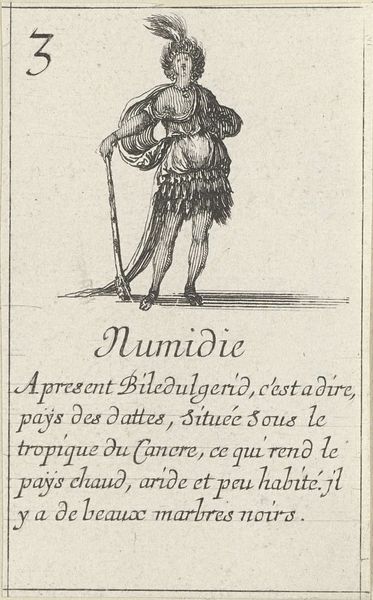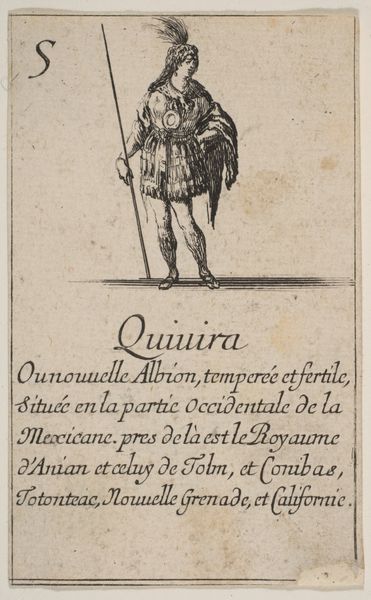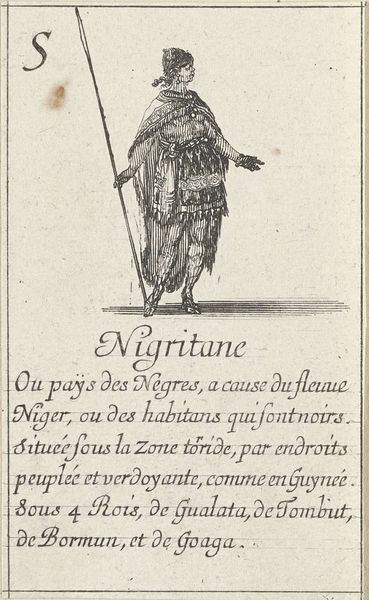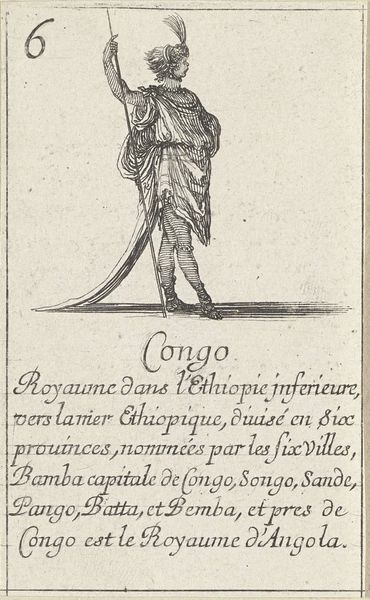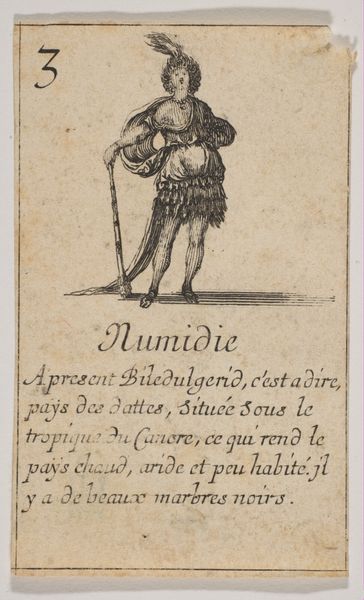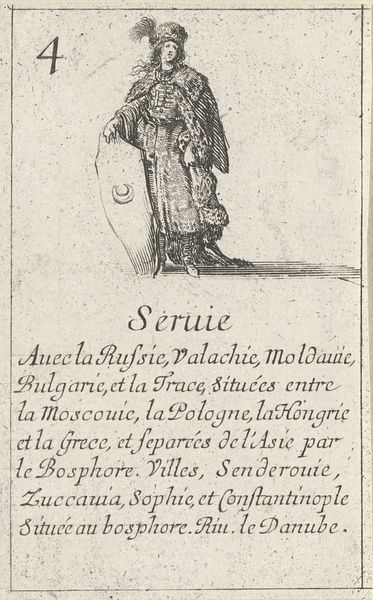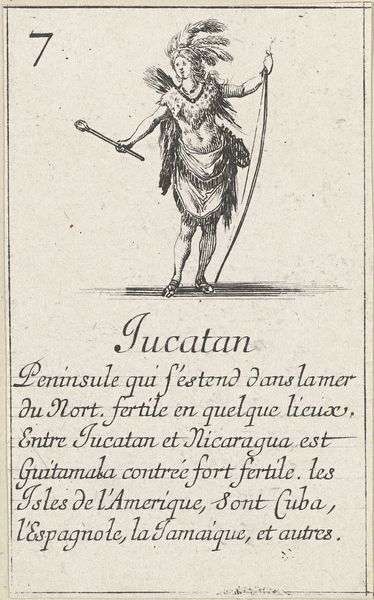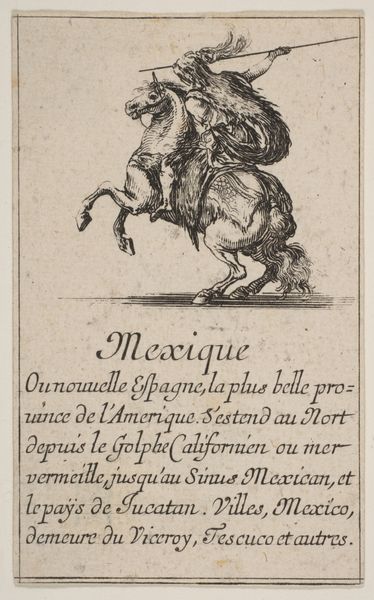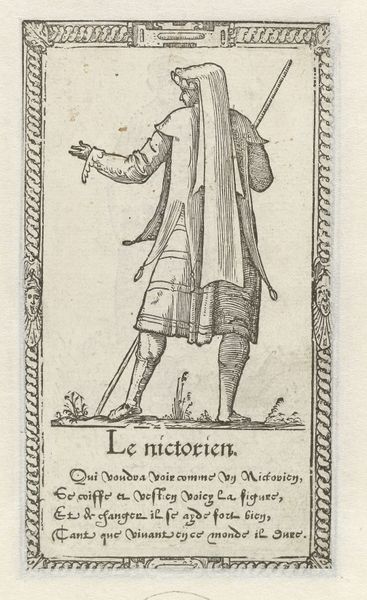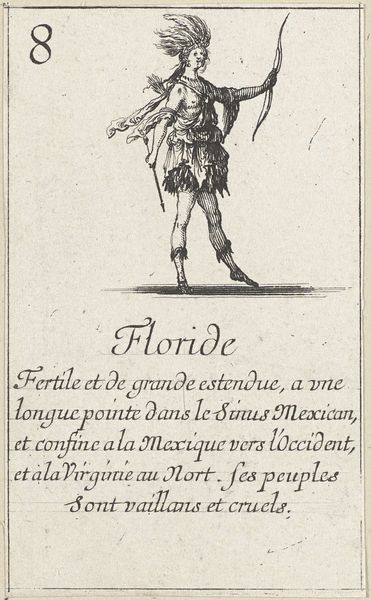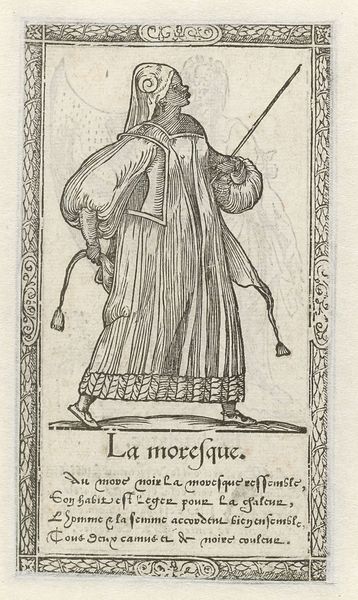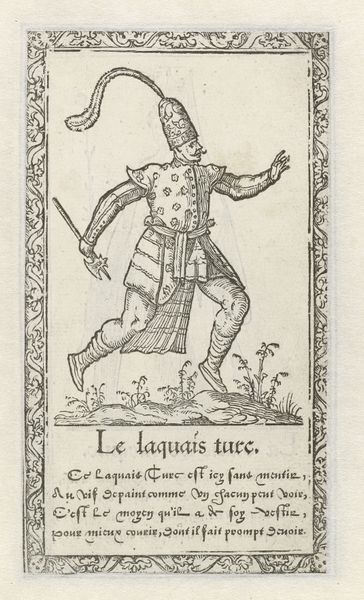
print, engraving
#
baroque
# print
#
old engraving style
#
landscape
#
figuration
#
ancient-mediterranean
#
line
#
history-painting
#
engraving
Dimensions: height 89 mm, width 55 mm
Copyright: Rijks Museum: Open Domain
Editor: Here we have Stefano della Bella’s “Vrouw uit Nicaraqua,” created sometime between 1620 and 1664. It’s an engraving, so the lines are really sharp and detailed. There’s a figure of an Indigenous woman, and the overall feel is… well, quite formal, but I wonder how accurate it is. What do you see in this piece? Curator: I see the complexities of colonial representation. Bella’s engraving, while seemingly a neutral depiction, is heavily mediated by European perspectives. This image isn't just a portrait; it's a statement about power, about the "New World" seen through a European lens. Note how she is both exoticized, adorned with feathers, and, simultaneously, civilized, given European features and stance. What’s your read on the French text below? Editor: It describes Nicaragua as sandy and sterile, beyond New Spain, with a long lake and cities, near a perpetually burning mountain... It’s quite a negative, almost hostile, description. Curator: Exactly. This isn’t simply geographical description; it's an assertion of dominance. It sets the stage for colonization by depicting the land and its people as other and implicitly needing European intervention. Think about how this image would have been consumed back in Europe – what ideas about Indigenous people were being circulated and reinforced? How do you think it reflects the racial politics of the era? Editor: It’s almost like the text and the image work together to justify colonization, framing it as a civilizing mission. The romanticism clashes with the rather callous textual description. Curator: Precisely! So next time we come across historical portrayals of people, let’s question the agenda behind the artistry, and examine who is benefiting. Editor: I never would have considered this artwork in terms of the history of colonialism. I now understand how a seemingly innocent image can uphold historical narratives. Thanks!
Comments
No comments
Be the first to comment and join the conversation on the ultimate creative platform.
